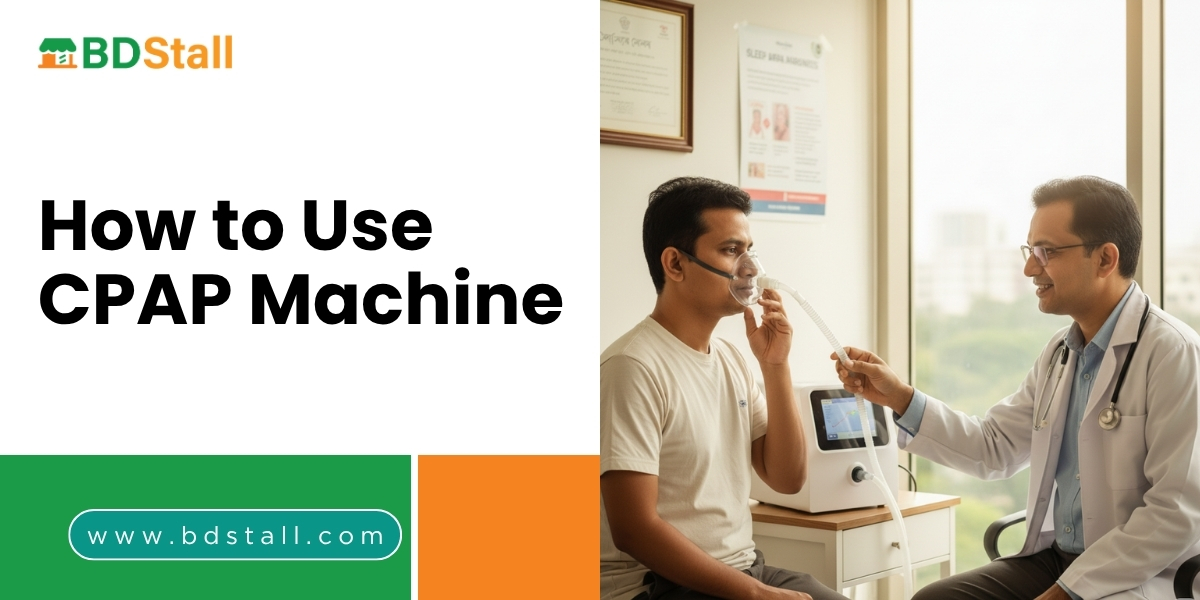
Sleep apnea is a serious health problem that affects millions of people around the world. It can lead to serious complications like high blood pressure, heart disease, stroke, and diabetes. But the good news is, there is an effective treatment for sleep apnea – CPAP Machine. While this machine may feel a little uncomfortable at first, it will keep you safe and comfortable.
In this blog post, we will discuss in detail what a CPAP machine is, how to set it up and use it, and how to keep it clean.
What is CPAP machine?
CPAP stands for Continuous Positive Airway Pressure. It is a medical device primarily used to treat obstructive sleep apnea. Sleep apnea is a condition in which your airway repeatedly closes during sleep. The CPAP machine fits over your nose, mouth, or both, delivering a gentle, steady stream of pressurized air through a hose and mask. This continuous flow of air acts like an “air splint,” keeping your airway open and preventing pauses in breathing. As a result, you can breathe freely and get a restful night’s sleep.
How does CPAP machine work?
- First, think of your CPAP machine as a silent companion, as it will run all night long. It draws in room air, filters it, and then delivers it at a specific level of pressure recommended by your doctor. This pressurized air enters your mask through a hose pipe, which provides enough pressure to keep your throat from collapsing.
- The gentle pressure keeps your airway stable, ensuring a continuous flow of oxygen to your brain and body. It eliminates snoring, reduces daytime fatigue, improves concentration, and significantly reduces the health risks associated with sleep apnea.
CPAP Machine Setup Guidelines
Follow these steps to unbox and prepare your new CPAP machine for use
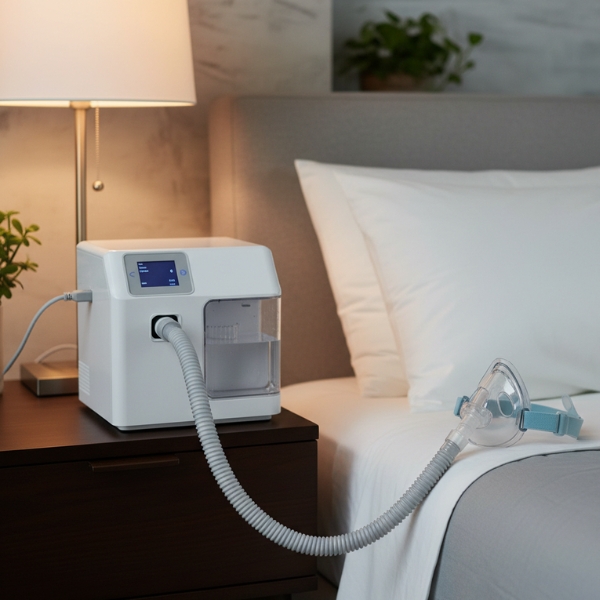
- Proper Placement: Place your CPAP machine on a stable, flat surface near your bed. However, make sure it is within reach of a power outlet and is comfortably within reach of your sleeping position without stretching the hose pipe.
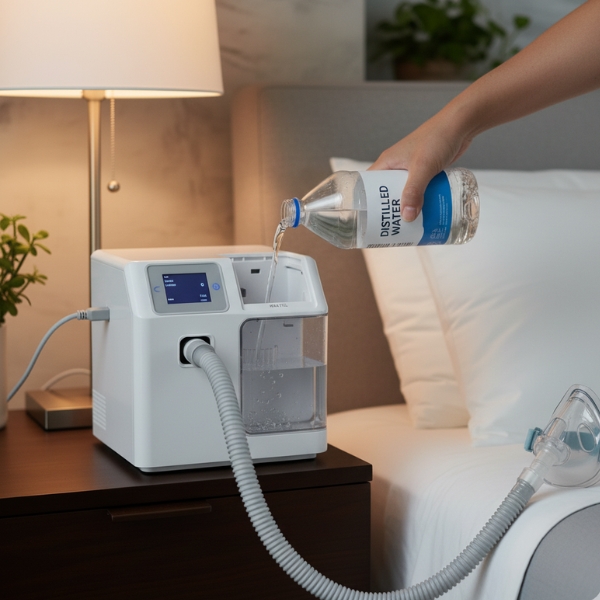
- Filling the Humidifier: Most modern CPAP machines have a humidifier chamber that adds moisture to the air, preventing dryness and irritation. Fill the humidifier chamber only to the recommended fill line with distilled water. Tap water can contain minerals and can damage the machine over time.
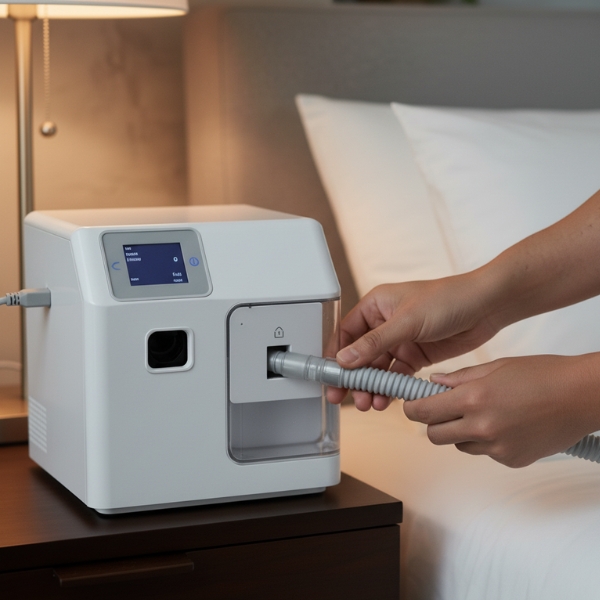
- Hose Pipe Connection: Securely connect one end of the hose pipe to the air outlet port of your CPAP machine.
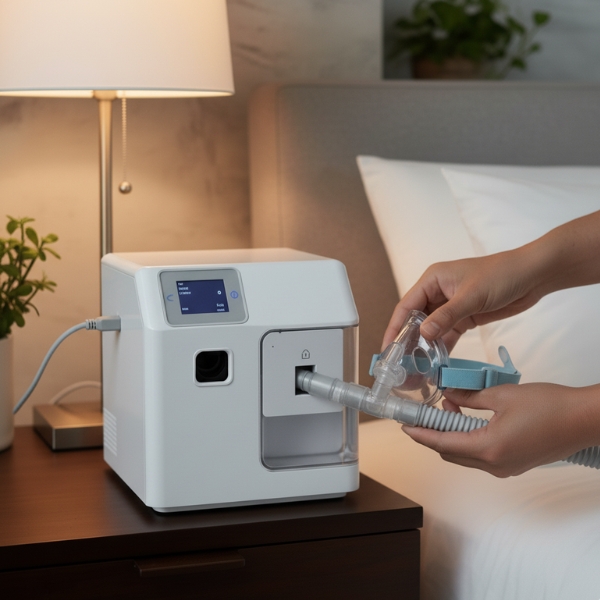
- Mask Connection: Connect the other end of the hose pipe to your CPAP mask that fits you.
- Plug in: Finally, connect all the machine accessories and connect the power cord to the machine and then to an electrical socket or multiplug.
Using the mask correctly
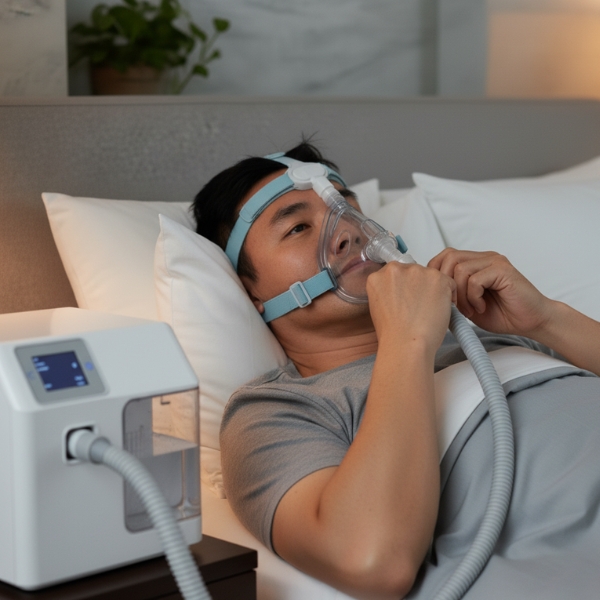
- The mask is your direct connection to the CPAP machine therapy, and a good fit is crucial for comfort and effectiveness.
- With the machine off, place the mask over your mouth, nose, or full face as designed. Gently position the headgear over your head.
- Adjust the straps evenly so that the mask feels comfortable but not uncomfortably tight.
- Turn on your machine and lie down in a normal sleeping position.
- Check for any air leakage around the edges of your mask. If you find any, gently readjust the straps or reposition the mask until the leakage stops. Minor leaks are fine, but excessive leaks will reduce the effectiveness of your therapy and can irritate your eyes or skin.
- If you have trouble finding a comfortable mask or getting a good seal, talk to your doctor or CPAP provider.
Best Ways to Clean CPAP Machine
The essential items you will need to clean a sleep apnea machine are:
1. Sink or Tub
2. Warm, Potable Water (86° Fahrenheit/30° Celsius)
3. Mild Liquid Detergent
4. Clean Towel
Tips for cleaning CPAP mask cushion, frame, and headgear
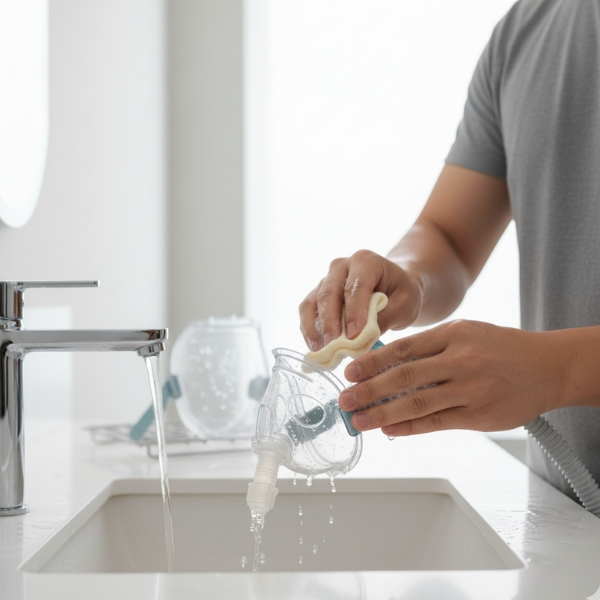
- To clean your CPAP machine, first unplug your machine from the power source.
- Then, disconnect the mask and air tubing connections from the CPAP machine.
- The mask you are using is made up of 3 parts: the headgear, cushion, and frame. So, separate each part from the mask step by step.
- Now, in a sink or tub, clean your mask cushion and headgear to remove any oil. Gently scrub with a mild detergent and warm or potable water. However, do not use detergents that are too alkaline, as these can damage the mask.
- Next, thoroughly rinse the cushion, frame, and headgear of the sleep apnea machine with lukewarm water.
- Then, lay the cushion and frame flat on a towel to dry. Do not place in direct sunlight.
Note: With regular use, the cushion should be cleaned daily, and the headgear and frame should be cleaned once a week.
Weekly Air Tubing Cleaning Tips
- To clean the air tubing of your CPAP machine every week, first unplug the machine from the power source.
- Disconnect the air tubing/hose from your mask and CPAP machine.
- In a sink or tub, wash the inside and outside of the air tubing with a mild dishwashing liquid and warm water.
- However, be careful not to use an excessively alkaline dish detergent, which can damage the air tubing.
- Then, thoroughly rinse the air tubing of the CPAP machine again with lukewarm water.
- Dry the air tubing on a flat surface, away from direct sunlight, on a towel.
- Tips for cleaning the humidifier tub of a CPAP machine
- Unplug your CPAP machine from the power source in the same way.
- Then disconnect the humidifier tub from the CPAP machine.
- Next, empty the humidifier tub and wipe it well with a clean, disposable cloth. Then dry it in direct sunlight.
- The humidifier tub should always be clean, clear, and free of discoloration. This is because it adds moisture to the pressurized air from the CPAP machine, preventing dryness of the nose, mouth, and throat.
- It makes CPAP therapy more comfortable, reduces irritation, and helps prevent problems like sinus headaches and nosebleeds.
How do I adjust the pressure on my CPAP machine?
The pressure settings on the CPAP machine should not be adjusted by yourself. Your doctor will carefully set the pressure level based on your sleep problems and personal needs. The wrong pressure can make your therapy ineffective or even uncomfortable. If you feel that your pressure is too high or too low, or if you are experiencing discomfort, contact your doctor.
How many watts does a CPAP machine use?
Most standard CPAP machines use between 30 and 60 watts of power. This can vary slightly depending on the model, whether the humidifier and heated tubing are active, and the pressure setting. This uses about the same amount of electricity as a light bulb.